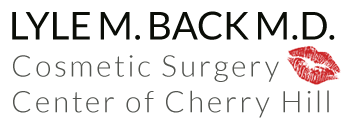Using Nutrition To Treat 5 Common Skin Problems
Acne: You should avoid well-recognized dietary “triggers” such as grains, corn, peanuts, eggs, soy and dairy. Even if you don’t have a diagnosed gluten intolerance problem, a relative gluten intolerance may also be at work because glutens seem to have an almost allergic-type role in stimulating acne. Gluten is a protein found in wheat, barley and rye – these are the grains that must be avoided. Oats are probably not an actual gluten but because of cross contamination at processing sites, oats effectively may have the same impact and therefore should also be avoided. Be aware that glutens are also commonly used as a food stabilizer/thickening additive (e.g. ice cream and ketchup). Gluten free grains/starches include potatoes and rice. Food containing iodides (salts), acidic foods (e.g. tomatoes) and citrus fruits (e.g. oranges or grapefruit) can also aggravate acne and stimulate sebaceous gland activity. On the other hand, foods rich in Vitamin A (e.g. carrots or sweet potatoes) and zinc (e.g. shellfish, clams, or chickpeas) can help reduce acne lesions.
Sunburn: The antioxidants in dark chocolate protect against sun damage – perhaps a cup of cocoa instead of that morning boardwalk cup of coffee? Green teas or black teas also have skin protecting antioxidants, too. Green leafy vegetables are well-known for their great anti-sun damage antioxidants and broccoli may be the best among them. Broccoli contains sulforaphane, a unique antioxidant that seems to have a variety of anti-cancer effects as well. Salmon or other sources of fish oil will decrease the inflammation of sunburn via their omega-3’s. Colorful fruits and vegetables high in carotenoids and lycopene (e.g. watermelon or tomatoes) will serve to lessen any sun damage. Keep in mind the double punch here – these nutritional weapons against sun damage also serve to lessen the risk of skin cancer!
Cold Sores: Caused by the Herpes Virus (HSV-1) which needs lots of the amino acid arginine to be activated and go into replication. This then results in painful, ulcerating blisters on the lips. The amino acid lysine tends to block the virus from being able to use arginine. Getting food substances in your system that are high in lysine and simultaneously low in arginine (i.e. a high lysine to arginine ratio) is a great nutritional strategy for stopping an outbreak when you feel one might be coming on. It is also a good means for prevention under circumstances which are often likely to cause an outbreak such as recent sunburn, fever/cold, or menstrual cycle. High lysine to arginine ratio foods can also limit the duration and severity of an outbreak once it occurs. High lysine/arginine ratio foods: milk, eggs, cheese, avocado, red meat, wheat germ, brewer’s yeast, fish, beets. Foods to avoid because they have proportionately more arginine than lysine (i.e. a low lysine/arginine ratio): chocolate, nuts, seeds, peanut butter and bananas.
Rosacea: Unfortunately, there is a very long list of well-known dietary “triggers” that you should try to avoid. Spicy foods, coffee, alcohol, lemons, avocados, bananas, figs, raisins, eggplant, mushrooms, lima or navy beans, sodium nitrites (e.g. cured meats like hot dogs or bacon), chocolate, parmesan or blue cheeses, Chianti or burgundy wines, salami, spinach, and chicken liver. Good intake of probiotics (e.g. yogurt) and essential fatty acids (the omega’s: 3, 6, and 9) such as are found in foods like salmon and walnuts, are often helpful in minimizing Rosacea symptoms.
Eczema: A diet lacking in essential fatty acids (e.g. walnuts, almonds, and flax seed) will perpetuate eczema. Keeping the skin well hydrated is also quite important in minimizing flare-ups. This means drinking plenty of liquids, but keep in mind that alcohol and teas actually have an overall dehydrating effect which could result in aggravating any eczema symptoms.
Dr. Lyle Back is originally from New York City, receiving his medical and surgical training at Rutgers Medical School, Cooper Hospital – University Medical Center, and Ohio State. He is Board Certified in General Surgery (ABS) and Plastic Surgery (ABPS). He is a Fellow of the American College of Surgeons (ACS), the American Academy of Cosmetic Surgery (AACS), and a longstanding member of the premier American Society of Plastic Surgeons (ASPS). He served as a Professor of Plastic Surgery at Temple University and St. Christopher’s Hospital for Children and performed reconstructive surgery with “Operation Smile” in Vietnam. He specializes in the full range of the most modern and state of the art facial cosmetic surgery procedures and non-surgical cosmetic enhancement techniques available today.
